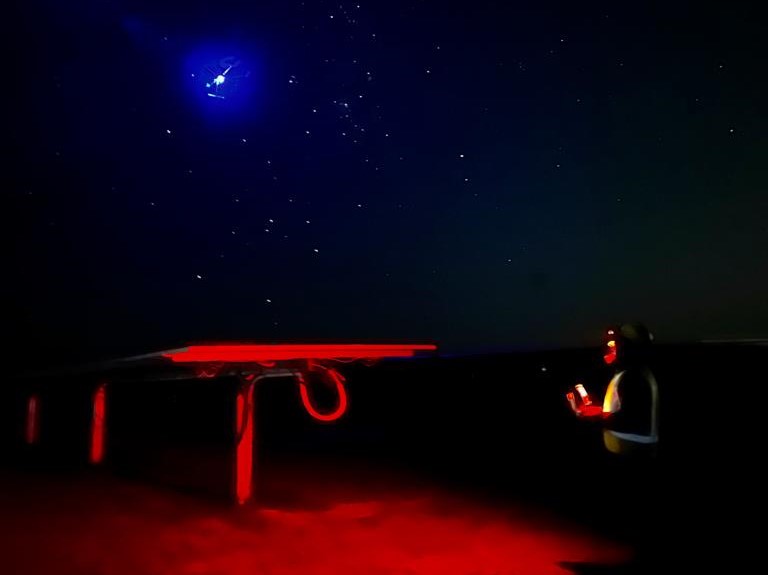Trusted Australian experts in solar panel performance, Lawrence McIntosh and Michelle McCann at Canberra-based PV Lab, have combined forces with innovators in high-speed electroluminescence imaging at Quantified Energy Labs (QE-Labs) in Singapore, to bring efficient solar panel testing to the Australian utility market at scale.
The technology is vital for testing performance at various points in the solar asset lifecycle. It serves as a useful baseline during solar farm commissioning, identifies underperformance before the end of panel defect liability periods, verifies damages caused by severe weather events for insurers, and checks performance during changes in farm ownership. And of course it pinpoints problems, assists in targeting maintenance, and reduces risks such as fire due to faulty panels, throughout the life of the asset.
QE-Labs is a commercial spin-out of technology developed at the Solar Energy Research Institute of Singapore (SERIS), part of the National University of Singapore.
“Our team spent a decade researching PV panel technologies, doing indoor testing, and certifying performance and reliability of panels in our tropical Singapore environment,” QE-Labs CEO Yan Wang told pv magazine Australia at All-Energy in Melbourne last week. “Then developers who were experiencing yield losses started sending us modules from their solar farms for testing.”
It wasn’t long, says Wang, before all parties realized that this method of bringing panels to the lab was too laborious and time-consuming, which also made it expensive – “the unit price was too high.” And as McCann said, the sampling method of nailing underperforming culprits across an entire solar farm was like “looking for a needle in a haystack.”
Researchers at SERIS realized that electroluminescence (EL) imaging – their preferred inspection technology, which “produces something like an x-ray of the solar panel,” according to Wang – could be taken into the field. But how much better would it be, if imaging didn’t have to be set up for each panel?
McIntosh and McCann, working in their Australian lab to assess the performance of panels in the Australian utility solar sector, had come to a similar conclusion.
“We knew that drones would revolutionise the way we gather data, and if they could be used to take electroluminescence images, we’d be able to bring huge scale to helping asset owners assess the condition of their solar farms,” McIntosh told pv magazine Australia.
He and McCann had just decided that developing their own autonomous EL system would not be “commercially smart”, when they were introduced by solar colleagues in Germany to QE-Labs. “It’s a really good fit,” says McCann of the resulting collaboration. “They’ve got the drones and the tech, and we’ve got the site experience and the ability to fly and work in Australia.”
McIntosh became a licensed commercial drone pilot and began PV Lab’s fly-by-night operation. That is to say, another benefit of electroluminescence imaging is that it is carried out in the dark, out of solar-generation hours.

Image: PV Lab
To continue reading, please visit our pv magazine Australia website.
This content is protected by copyright and may not be reused. If you want to cooperate with us and would like to reuse some of our content, please contact: editors@pv-magazine.com.




2 comments
By submitting this form you agree to pv magazine using your data for the purposes of publishing your comment.
Your personal data will only be disclosed or otherwise transmitted to third parties for the purposes of spam filtering or if this is necessary for technical maintenance of the website. Any other transfer to third parties will not take place unless this is justified on the basis of applicable data protection regulations or if pv magazine is legally obliged to do so.
You may revoke this consent at any time with effect for the future, in which case your personal data will be deleted immediately. Otherwise, your data will be deleted if pv magazine has processed your request or the purpose of data storage is fulfilled.
Further information on data privacy can be found in our Data Protection Policy.